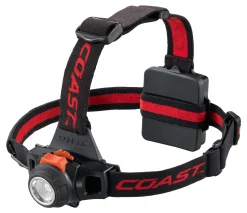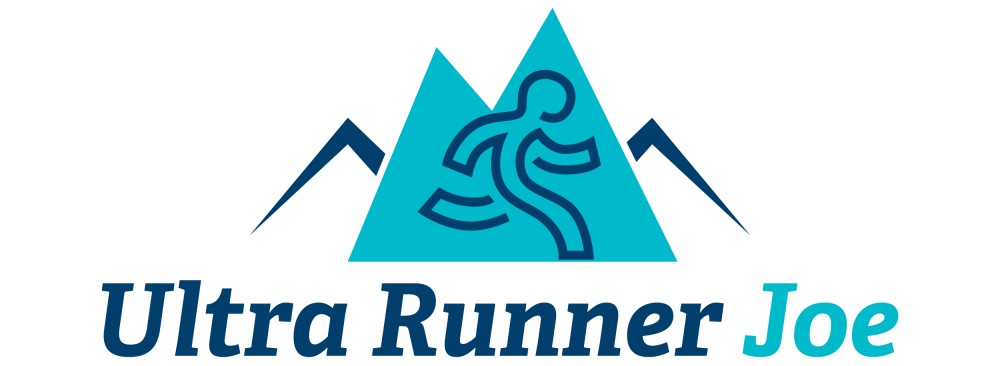Gear Review: Coast HL27 Headlamp
As I was walking through Outdoor Retailer back in August, I was passing by the Coast booth and their product line up caught my eye. Having never heard of them before, I decided to stop by and have a chat. They had a very interesting looking suite of light products, including the Coast HL27. As it turns out, they don’t specifically target their products toward the trail running crew…you are more likely to find their product line up inside of a Home Depot than your local running store. Still, the product design and specs all looked promising and the $60 price tag is hard to beat, so after a conversation with their Director of Marketing, I decided to pick up a HL27 to test and review. Let’s have a look shall we?
DISCLAIMER: None to note. They were selling them at Outdoor Retailer for a discount, so I decided to buy one to review. Afterall, you can never have too many headlamps!
In The Box and Specs
In the box, you have the headlamp with 3 AA batteries included. The design of the headlamp is a three strap harness with the battery pack on the back of the head, similar to the Petzl NAO. The lamp is a single LED center-mounted light, which tilts to adjust the aim of the light. It includes a pretty simple interface, with an on/off button and a dial, which allows you to quickly adjust the light output.

Price: $60 Retail
Light Output: Variable, 1 lumen -> 330 lumens
Runtime: 93 hours -> 8:30 hours
Beam Distance: 7 meters – 129 meters
Weight: 6.9 ounces
Fit
The fit of this headlamp is actually quite nice. It’s three strap harness approach fits securely to the head with no movement, all the while not feeling too tight or restrictive. The light unit on the front has a relatively small footprint, which is also nice. It is slightly curved to conform to the shape of the forehead as opposed to having an awkward boxy feel like some others I have tested. If I was to complain about anything regarding the fit, it would probably be the battery pack. I like that they don’t use a proprietary battery pack because of the flexibility. At the same time, the tradeoff is that standard batteries tend to take up more space, resulting in a larger battery pack. In my use of this, it didn’t get in the way of anything (like my hat or Orange Mud rear bottle pack), but it definitely feels a bit bulkier in the back.
In Action
First, the back yard test. I usually take this picture as a means of getting a general idea of the light output, range, and spread pattern. As you can see, the light output is pretty solid at the max 330 lumens. It has a super wide light spread and throws light outward to a decent distance. The HL27 does not have a beam mode, offering only a flood light option. [UPDATE on 10/15/2015: Even the best reviewers make mistakes, especially when they rip open the product out of excitement and don’t thoroughly read the instructions. The HL27 does have a spot mode, controlled by turning the bezel right in front of the power button. In fact, it is great, because it also takes a dimmer approach that allows you to go from flood mode to beam mode and anywhere in between depending on your need. Apologies for missing this initially. I have updated the pictures to include one of spot beam mode.] In the comparison pictures below, you will quickly notice the difference between the HL27 and the Petzl NAO (at 535 lumens). You can definitely see a difference between each of the pictures, but my feeling here is that this comes down to a matter of preference; Assuming that the distance that the light casts forward is acceptable, I kind of prefer the wider light coverage because it gives me a more comfortable feeling of my immediate surroundings.

Coast HL27 (Flood)

Coast HL27 (Spot)

Petzl NAO
Second, is the run test. I took this out on a few runs, including the first part of the Bear 100 recently and I would say that for a lamp that was not designed specifically for running, it did a fantastic job. To revisit the flood vs. beam light approach, I found the lamp in flood mode to provide ample light output. I never felt like I couldn’t see obstacles in my immediate path without having to adjust my speed and was always able to a good bearing on where I was.
My absolutely favorite part of this lamp is the way in which you can adjust light output on the fly. Most lamps I have used either allow you to program in a few light output modes or automatically adjust the light output for you (i.e., reactive lighting). The HL27 incorporates a dial, right behind the on/off button, that acts as a dimmer switch. This dial allows you to quickly go from 1 to 330 lumens and everything in between…I love this flexibility and level of control. The second great aspect is the battery life, which provides 8+ hours of use on max output. I do wish it had a battery life indicator though so I didn’t have to use fully charged batteries on each run to feel comfortable that I wasn’t accidentally running on low batteries.
Overall Thoughts
Pros
- 8+ hour battery life on full light output is hard to beat. In most cases, if you are also tuning the light output throughout the run based on what you need, it should last the duration of the night.
- The light output and flood-to-spot dials offer full flexibility and control to the runner in regards to controlling real-time light output.
- Overall value. For $60, this is a feature-packed headlamp!
Cons
- No battery life indicator to tell you when you are close to going dark. This is key for many trail runners since the last thing you want is to be caught in a remote area in the dark.
- Large battery pack adds bulk and a little bit of weight to the lamp (about a half an ounce heavier than the Petzl NAO).
- Although I didn’t experience any issues in my initial use, the tilt mechanism on the lamp seems to be a bit fragile. We will see how durable it is with continued use, but worth calling out.
Overall, the Coast HL27 is solid running headlamp. $60 for a 330 lumen headlamp with 8+ hours of battery life is phenomenal. At half to a third of the cost of other comparable brands on the market, this lamp is a great option for the cost sensitive trail runner that isn’t necessarily bothered by the specific con’s that I called out.
If you like this post and would like to stay up to date when future gear reviews, race reports, and other related posts are released, please follow my Facebook page at Ultrarunner Joe!
